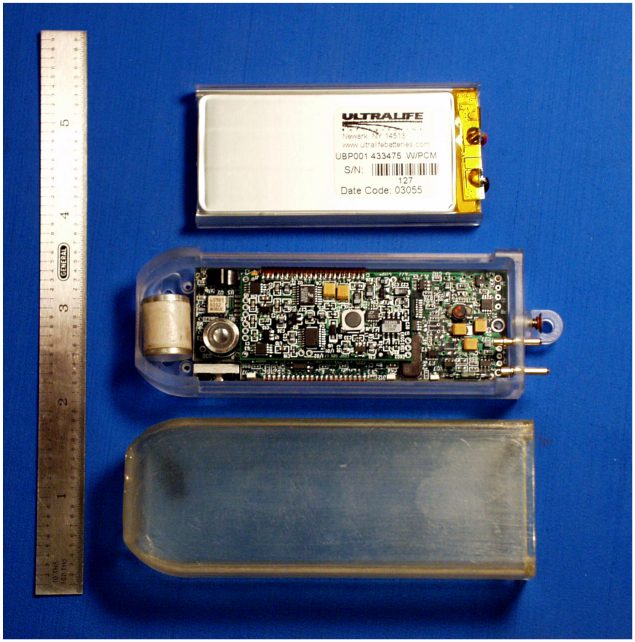The first DTAG (short for ‘Digital sound recording TAG’) was designed and built in 1998 by electronics engineers Mark Johnson and Tom Hurst at the Woods Hole Oceanographic. Peter Tyack and his then students Doug Nowacek and Patrick Miller helped to define the sensor suite which comprised a triaxial accelerometer, a triaxial magnetometer, a pressure sensor and a single hydrophone. The sampling rate of the first DTAG was 16 kHz and it had 400 MB of memory (over $1000 of FLASH memory at 1998 prices). The tag electronics were cast in epoxy and a non-rechargable Lithium battery was attached via an underwater connector. Mechanical engineering student, Alex Shorter, joined the group as a summer intern and designed a polyethylene fairing to house the electronics, battery and syntactic foam for floatation. Three commercially-available suction cups were used and a release system was included which detached the tag from the suction cups. Software engineer, Jim Partan, helped writing the code for the tag and for the PC interface. Data was offloaded via an infra-red interface with a full offload of the memory taking about 12 hours.
The DTAG-1 was first used on northern right whales in 1999 and was subsequently used on sperm whales and pilot whales. The tag was retired in 2002 when the DTAG-2 superceded it.
